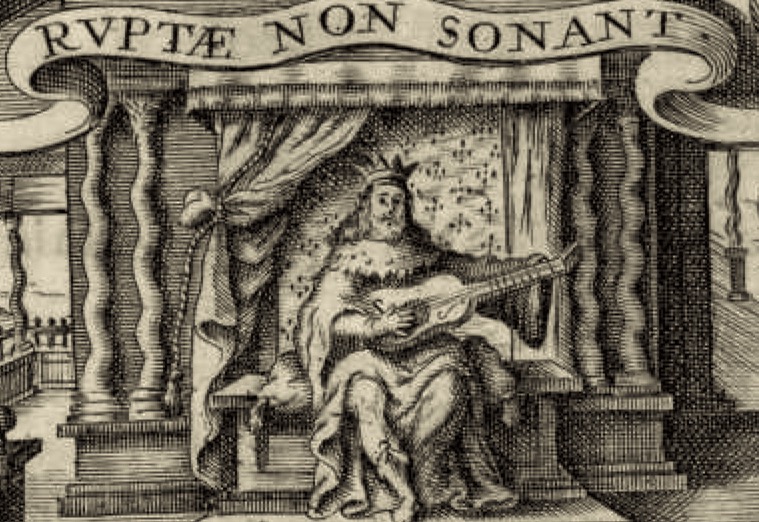Vihuelist prince. 1670
(1670) - Don Iuan Baños de Velasco y Acebedo. L. Anneo Seneca, ilustrado en blasones politicos, y morales, y su impugnador impugnado de si mismo. Al Serenissimo Señor el Señor D. Jvan de Austria. Madrid: Mateo de Espinosa y Arteaga, 1670.
instrument: vihuela de mano / guitarra | century: 17cent/3/late | catalogue nº: 17-205

Artwork
Creator Baños de Velasco y Acebedo, Juan
Medium Artwork: Woodcut
Location
City Madrid | Region Madrid | Old kingdom Castile
Characteristics
| Body Waisted | Strings strings | Neck Long | Pegbox Angled flat |
| Bridge Fixed | Frets Yes | Back Flat | Pegs Unclear |
| Technique Plucked fingers |
Commentary
ARTWORK
Engraving of a prince playing a vihuela (guitar) in L. Anneo Seneca, ilustrado en blasones politicos, y morales, y su impugnador impugnado de si mismo. Al Serenissimo Señor el Señor D. van de Austria by Don Juan Baños de Velasco y Acebedo. Madrid: Mateo de Espinosa y Arteaga, 1670, p. 128. The engraving is signed “Orozco Presbiter”
The guitar, called vihuela here probably to reinforce the fact that the author is talking about a noble instrument, is used to show that music is to be used as an emblem of good governance. Juan Baños de Velasco makes a comparison between the strings of the vihuela and a prince’s subjects to speak of the moderation that the sovereign prince should show towards them. The engraving is headed “Ruptae non sonant” - Broken they will not sound.
INSTRUMENT
The instrument has the characteristics of a seventeenth-century guitar. It is waisted with clearly different widths of the two bouts, a bridge with moustaches, and the rosette at the instrument’s waist. The neck has eight tied frets, not all parallel (probably deliberate) and an angled flat pegbox. The prince is depicted tuning the instrument and there is a broken string on the soundboard.
Reproductions
http://bibliotecadigital.jcyl.es/i18n/catalogo_imagenes/grupo.cmd?path=10070637